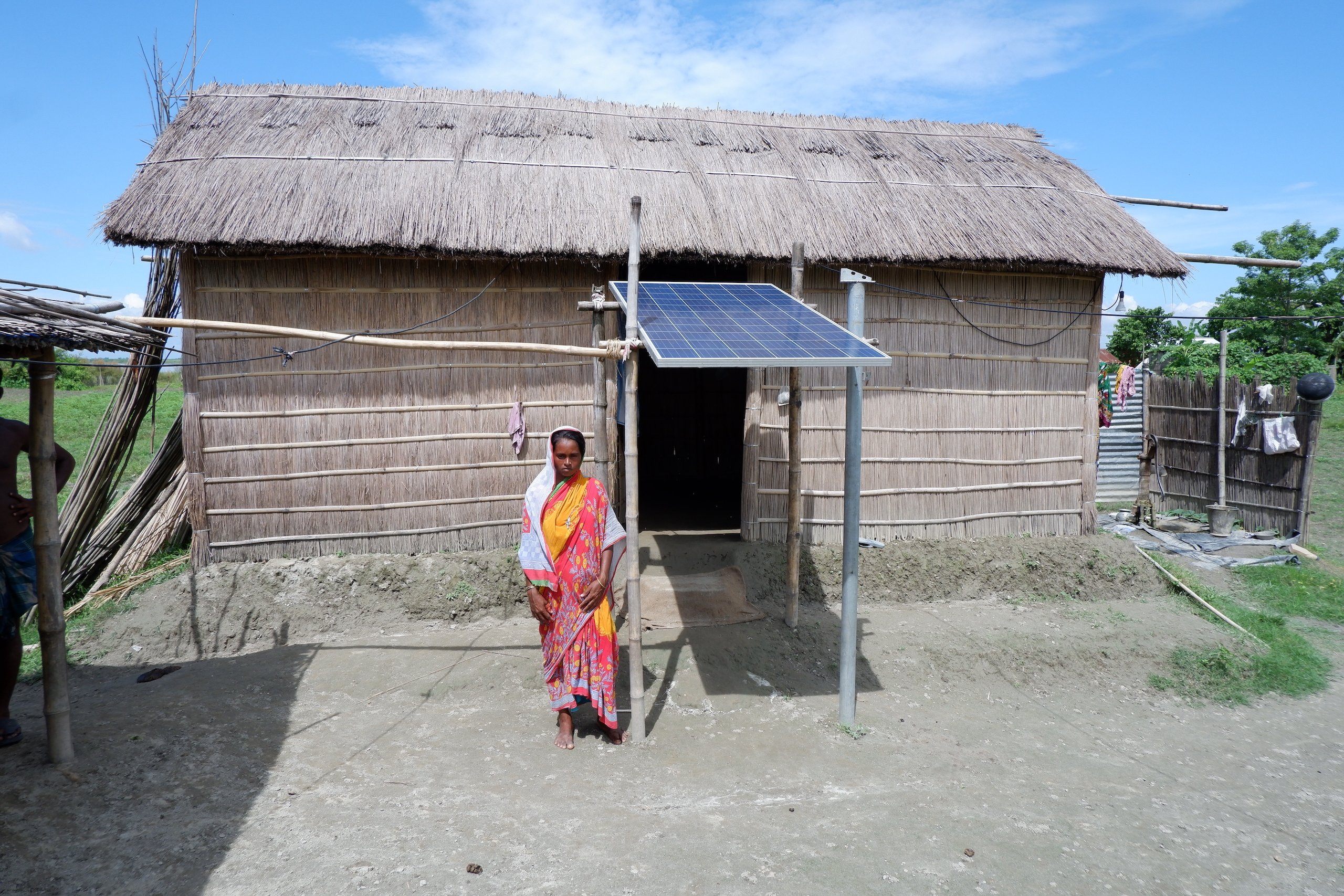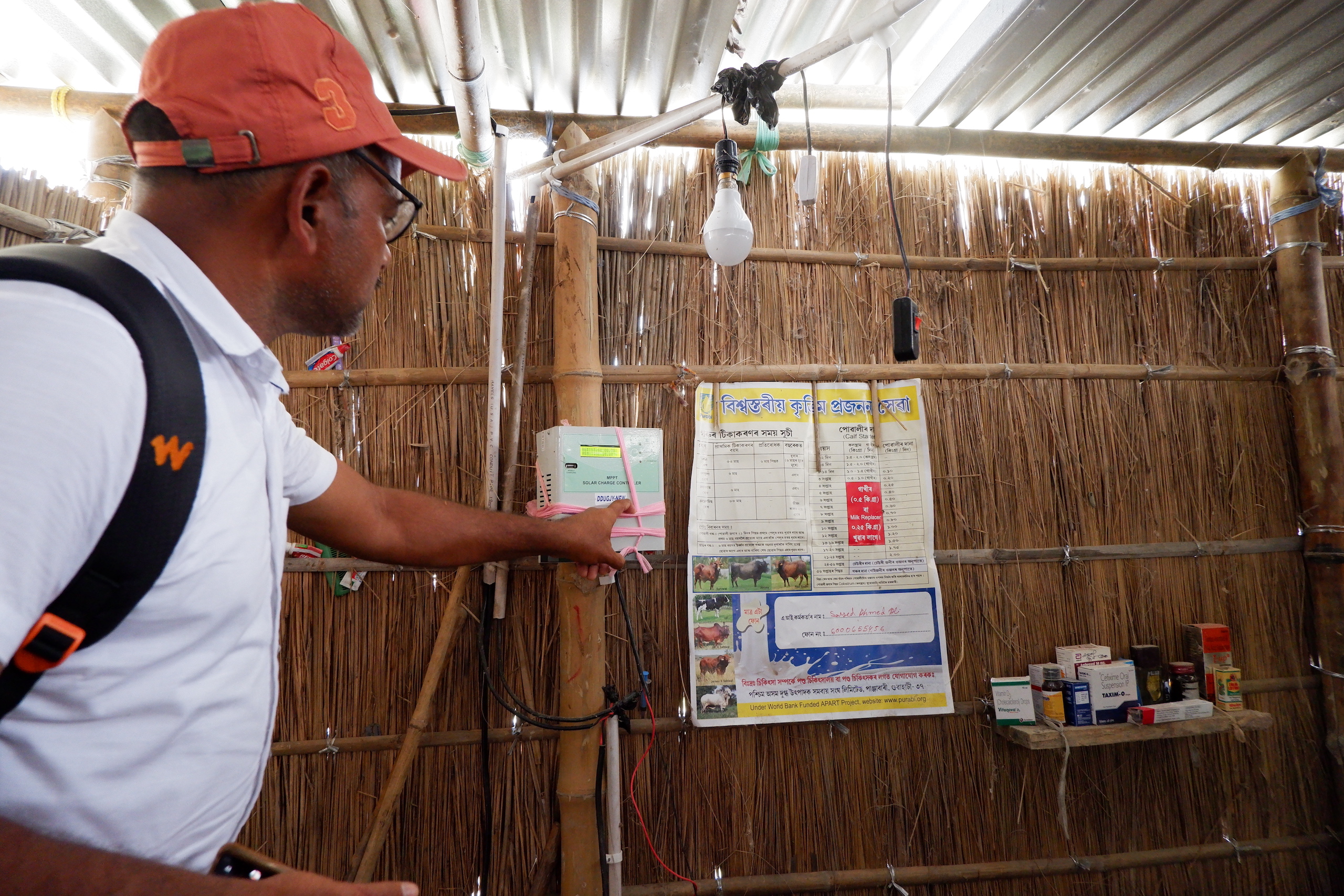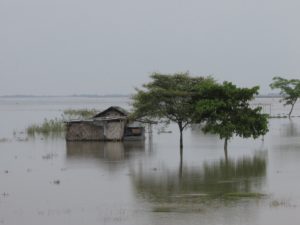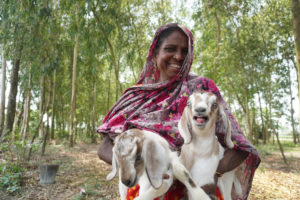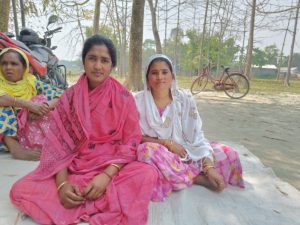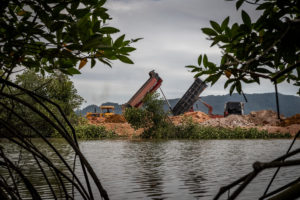Two summers have gone by since Taslima* and her classmates last saw the fans in their classroom stir the air. Their home state of Assam in northeast India is getting hotter, but for the students of the Indadiya Islamia Madrassa on Chalakura Char, a river island 280km away from Assam’s capital city Guwahati, there has been no respite from the heat. Nor have they had electric light to aid their studies.
This is despite the fact that solar panels were installed at the madrassa (an Islamic religious education institute) in 2018 under the Deen Dayal Upadhyaya Gram Jyoti Yojana (DDUGJY) rural electrification scheme. The DDUGJY continues and extends nationally conceived schemes already active for more than a decade to help achieve 100% electrification. A key challenge was rural electrification in off-grid areas, which became easier once affordable solar home kits became available. This was especially important for a state like Assam, a third of whose area is flood prone, and is considered the most vulnerable to climate impacts of the 12 states in the Indian Himalayan region.
Between 2016 and 2021, DDUGJY subsidised the provision of a solar power kit consisting of a panel, controller and a battery running on lead acid or gel; under the current phase of the scheme running from 2022 to 2027, beneficiaries receive lithium-ion batteries.
In 2021, the solar panels at the Indadiya Islamia Madrassa stopped working, after only three years. The vice president of the Madrassa, Mahibul Islam Ahmed, notified the local panchayat (elected village council), who raised the issue with the contractor, but nobody came to check on the equipment. Under the terms of the DDUGJY scheme’s tender, the vendor should be responsible for a comprehensive maintenance contract lasting five years. While complaints have been forwarded to the contractors, vendors, and the state government-run Assam Power Distribution Company Limited, which assessed and awarded bids to vendors, the villagers have received no response.
The school has been running without electricity for three years now.Mahibul Islam Ahmed
“The students face a lot of problems when it comes to electricity. Most of the char dwellers are below the poverty level, so they can’t afford to send their children to mainland schools. When the solar panels were installed, the students benefited from them, [but] the school has been running without electricity for three years now. No one came to do an inspection or survey. We are still waiting for something to happen,” said Ahmed.
In the meanwhile, more than 300 students at the school – both girls and boys – study without fans or lights. More than 150 underprivileged boys lodge in the madrassa’s hostels, which are also without any electricity.
“Summers are very hot here in the chars, we get tired easily during classes,” said Taslima. “Most of my friends fall sick in peak summer.”
A scheme ideal in theory, imperfect in practice
In October 2022, The Third Pole filed Right to Information requests with APDCL to find out the coverage of decentralised renewable energy solar energy schemes in rural areas of Assam. The responses received indicated, at least on paper, that the DDUGJY scheme has secured 100% coverage in almost all villages across Assam’s 31 districts. But when The Third Pole visited chars and villages in Assam’s Dhubri and Kamrup Rural districts, the reality was very different.
Assam’s chars, or riverine islands, are formed through the depositing of silt in the Brahmaputra River. The chars and their residents are highly vulnerable to the impacts of climate change. During Assam’s annual floods, most chars are submerged beneath the river, either partially or completely. In the face of constant flooding and erosion, char residents are often forced to migrate to chars that remain above water, and which can sustain them for a few months to a year.
In early 2022 Azhar Ali, a homestead farmer from the char of Magua Bilar Pathar in Kamrup Rural district, received a solar panel, controller and battery unit from the government under the DDUGJY scheme. Three months later, cracks appeared in his controller box and the system stopped working.
With the controller box broken, Ali connected his solar panel directly to the lithium battery to power his fan and light bulbs. His char being off the grid, this was his only source of electricity. The direct connection, however, meant that the battery could not store energy for use at night. Technicians and experts also do not advise connecting the solar panel directly to the battery as it can overcharge the battery and damage it. But the only expertise Ali had access to was his own.
The DDUGJY tender says that in the case of damage to a battery, it can be replaced for free within five years of its installation. But none of the homes The Third Pole visited – on Nowapara Kathalguri and Maghua Bilar Pathar chars in Kamrup Rural district, as well as Chalakura Char in Dhubri district – had had damaged batteries replaced. Instead, households that were beneficiaries of the scheme spent their own money to fix batteries or buy new ones.
Another resident of Magua Bilar Pathar char, Abdul Kalam, told The Third Pole that in June 2022 he received a kit similar to Ali’s which had a capacity of 320V, enough to power at least five light bulbs. But the kit only contained enough wiring for two lightbulbs, and Kalam had to spend INR 225 (USD 2.74) of his own money to buy additional wiring – a small but significant expense from his monthly income of INR 4,000 (USD 49). Experts consulted during reporting for this story said vendors should have been responsible for providing sufficient wiring, as specified in the bidding documents.
The vendors The Third Pole reached out to did not respond to requests for an interview. A sub-contractor from Assam’s Karbi Anglong district, who did not want to be named, said: “We get a lot of complaints if something is not working in the solar panels, but if we don’t get money from the main vendor we can’t put a hole in our pocket in the name of repairs.”
Moreover, some char residents had no access to the solar kits at all. The fluid nature of habitation on Assam’s chars means that for newer migrants it is difficult to prove residency and thus receive voter cards – a requirement to receive the subsidised solar kits.
What’s on paper vs reality on the ground
The last Indian census, conducted in 2011, found that the proportion of households in Assam with access to electricity stood at 37%, compared to the national average of 67.2%. In 2015, the state claimed to have achieved a staggering household electrification rate of 96.8%, and aimed to achieve 100% electrification by 2022.
The RTIs filed on behalf of The Third Pole indicated that all households eligible to benefit from the DDUGJY solar scheme had had solar panels installed. RTI responses state that in the villages of Nowapara Kathalguri and Maghua Bilar Pathar – on two adjacent chars – every eligible household (187 and 196 households respectively) were fully covered by the scheme.
Akram Hussain, a grassroots political leader affiliated with the Bharatiya Janta Party (BJP) – which is in power in both Assam and the Union government – told The Third Pole: “There are a lot of faulty solar panels seen in villages which are of no use after three months. The villagers either have to pay money to repair it or wait for it to get repaired which also takes a lot of time.” He estimated that at least half of the solar kits installed in Nowapara Kathalguri and Maghua Bilar Pathar broke down within a short period.
Possible reasons for lithium batteries failing range from the device load exceeding the size of the battery, or faulty wiring.
“Usually, lithium batteries require low maintenance if we compare them to LED or gel batteries,” explained Harsha Meenawat, a senior programme manager with research non-profit the World Resources Institute (WRI) India. “Sometimes if there are plug-ins additional to the electric socket with load of the location greater than the battery capacity, or a different setup to reconnect with no local electrician to assess the situation, there are instances of battery tripping,” she said.
The Third Pole’s RTI inquiry revealed that the vendor – Madnani Engineering Works – had spent INR 45,000 (USD 550) for a single unit but Hussain was not convinced that the vendor actually spent this much. The equipment looked cheap, and he says, “Except for the solar panels, other devices are not up to the mark.”
Madnani Engineering Works did not respond to interview requests.
“Audits for these appliances delivered under such schemes [as DDUGJY] at household level hardly take place. And if audits happen, they don’t calculate [performance], limiting themselves to the financial audits. Else we would have had a number in terms of the success or failure of the appliances delivered under such schemes,” said Meenawat.
Upon being contacted for this story, Assam’s minister for power, cooperation, mines, minerals, indigenous and tribal faith and culture Nandita Gorlosa, agreed that the problems with lack of quality, maintenance, and gaps in actual performance of the DDUGJY in practice is an important issue, and said she will talk to her principal secretary and come up with a report on the matter.
The way forward
Experts interviewed for this story suggested that the solution to addressing problems in government-supported household solar schemes could lie in changes to tender processes. Harsha Meenawat of WRI argued that the tender process should be based on a ‘Quality Cost Based System’, a well-accepted methodology for vendor selection globally which evaluates bidders based on technical and quality scores before looking at cost. But in most tender processes across India, the vendors are chosen based on lowest cost, and the DDUGJY also follows this model, with low-quality results.
“There is a need to define the responsibilities of vendors based on site surveys and energy demand assessments, clearly outlining what should be undertaken by the vendor and not left for someone else to figure out,” said Meenawat. She added that it is important that vendors be held accountable, even if they are subcontracting to other enterprises.
Ulka Kelkar, director of the climate programme at WRI India, raised the need to pass on the responsibility of maintenance to locals, a clause which is absent in current tenders. “Tenders themselves should have a clause to [train] communities in maintenance by teaching them the required skill sets, and generating job opportunities for them.” Waiting for an outsider to come and maintain solar devices – especially in remote off-grid areas – is bound to be challenging, she added.
*Name has been changed
Reporting for this story was supported by a grant by the Earth Journalism Network
Corrigendum: An earlier version of this story mentioned “LED acid or gel”, it has been corrected to “lead acid or gel”
